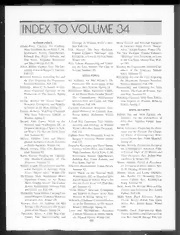
Mining together: large-scale mining meets artisanal mining PDF
Preview Mining together: large-scale mining meets artisanal mining
dd ee zz riri oo hh utut AA e e rr C uu ss oo clcl ss DiDi c c ASM blibli uu PP Communities and Small-Scale Mining dd ee zz riri oo hh utut AA e e MINING TOGETHER rr uu ss oo sclscl A Guide for Action Large-Scale Mining meets Artisanal Mining DiDi c c blibli uu PP dd ee zz riri oo hh utut AA e e rr uu ss oo clcl ss DiDi c c blibli uu PP dd ee zz riri oo hh utut AA e e rr uu ss oo clcl ss DiDi c c blibli uu PP Mining Together Large-Scale Mining Meets Artisanal Mining: A Guide for Action March 2009 © 2009 Communities and Small-scale Mining (CASM), The World Bank / International Finance Corporation Oil, Gas and Mining Sustainable Community Development Fund (CommDev). Photography: Photographs provided by Joseph Mbaya, Liz Wall, Charles Loots, and CASM secretariat. Disclaimer: The findings, interpretations, views and conclusions expressed herein are those of the authors and do not necessarily reflect the views of the Executive Directors of the International Bank for Reconstruction and Development (the World Bank), the International Finance Corporation (IFC) or of CASM organization supporters and partners. Nor do they necessarily reflect the views of the governments that the International Finance Corporation and the International Bank for Reconstruction and Development (the World Bank) represent. FOREWORD (3) Conflict is normal in the interaction between people, organizations, countries, and companies. It is neither inherently positive nor negative. And although conflict usually has negative connotations, it certainly also brings opportunities as well as challenges. Conflict can either be constructive or destructive. Which way it goes largely depends on how conflict is prevented, managed, and ultimately transformed. And that prevention, management, and transformation represent a shared responsibility of all major stakeholders. A crucial undertaking then is to understand the underlying issues of conflict, its dynamics and its norms, and to focus on the potential opportunities that a particular conflict offers in any situation. In this regard, the case of large-scale mining and artisanal miners is no different from other conflict- prone situations. The present guide Mining Together-When Large-scale Mining meets Artisanal Mining is an important step to better understanding the conflict dynamics and underlying issues between large- scale and small-scale mining. This guide for action not only points to some of the challenges that both parties need to deal with in order to build a more constructive relationship, but most importantly it sheds more light on some potential interventions for conflict prevention, management, and even transformation. This guide, then, represents a step in the right direction to start transforming the relationship between large-scale and artisanal miners through win-win solutions that emerge out of the genuine interaction and dialogue of all stakeholders involved: governments, companies, communities, miners and development organizations. In that context, the present guide is a relevant contribution that demonstrates that mining together is not only a dream, but can also be a reality. Paulo De Sa Manager Oil, Gas and Mining Policy Division The World Bank Group MINING TOGETHER / A Guide for Action ACKNOWLEDGMENTS (4) The production of this guide was made possible by the work of many individuals, and we are extremely grateful for their contributions. Among those who were involved at different stages of the review process, we would like to thank: Anne-Marie Fleury, ICMM ; Arjun Bhalla, CommDev ; Christopher Sheldon, CASM; John Nicholas Middleton, IFC; Justin Pooley, IFC; Kevin D’Souza, Wardell Armstrong; Liz Wall, Consultant; Mark Wall, Barrick Gold; Nerys John, De Beers; Paul Hollesen, AngloGoldAshanti; Robert Vanoi Gerrits, IFC; Sarah Ruck, IFC; Veronica Nyhan, CommDev; Veronika Kohler, CASM. As the drafting process was extensive and iterative, all the named persons above have not reviewed the final version of this guide. Some sections are based on an early draft provided by Wardell-Armstrong (Kevin D’Souza) in fall 2007. The guide was made possible by the financing support of CASM and CommDev. For further information, please contact the main authors: Remi Pelon, Mining Specialist, World Bank, rpelon@worldbank.org Gotthard Walser, CASM Program Manager, gwalser@worldbank.org MINING TOGETHER / A Guide for Action CONTENTS Introduction to the Guide 7 SECTION 1 - Setting the scene: 9 When LSM meets ASM on the ground SECTION 2 - Starting on the right foot: 15 Principles guiding engagement with ASM SECTION 3 - What can be done? 21 Tentative list of actions SECTION 4 - Framing a corporate policy on ASM: 27 General recommendations Appendix 1 : Bibliography 30 Appendix 2 : Case studies 32 Map 1. Sample of clashes reportedly caused by ASM - LSM interaction 2007-08 SIERRA LEONE Koidu - Diamonds 1990-2008 PNG Porgera - Gold 1996 COLOMBIE Bolivar - Gold 2005 TANZANIA 2008 GHANA Geita - Gold 1984 BRAZIL Obuasi - Gold Serra Pelada - Gold 1996 BRAZIL Serra Leste - Gold 2008 DRC Kamatanda - Copper/cobalt Source : Compiled by CASM, 2008. Map 2. Colloquial names for artisanal miners Orpailleurs (gold) Ninjas Francophone Africa Mongolia Diggers Sierra Leone and Liberia Pocket Miners Pork Knockers Philippines Warare Guyana Ethiopia Galamsey Ubeshi (diamonds) Ghana Nyonga (tanzanite) Piquineros Latin America Wabeshi (diamonds) Tanzanie Garimperos Creuseurs Panners Lusaphone countries Francophone Zimbabwe Africa Source : Adapted from Wardell Armstrong 2007. INTRODUCTION TO THE GUIDE Large-Scale Mining (LSM) companies A “Mining together toolkit” is being drafted (7) increasingly come across Artisanal and Small- to complement this CASM “Mining together scale Mining (ASM) workers during their guide”. This sister-publication, to be published exploration or production activities in the in 2009, will be more application oriented and developing world. The ASM-LSM relationship more specifically targeted to mine-site staff in is often conflictual because both types of charge of designing and implementing ASM- miners compete for the same resource or LSM action plans. because they perceive each other as a threat. However the ASM-LSM relationship is now also undergoing a largely positive evolution in part thanks to new Corporate Social Responsibility A note on terminology: (CSR) commitments. In some places, “mining together” has become more than a dream. LSM in this guide refers to the activity of major companies as well as to mid-tier and junior-level The Communities and Small-scale Mining companies or to any formal company that complies (CASM) initiative wishes to contribute to the with international performance standards. sharing of knowledge and solutions related to ASM-LSM issues. CASM has partnered with ASM covers both artisanal and small-scale mining two key resources in the field of community even if this guide focuses mostly on artisanal mining. development and mining: the World Bank / The term ASM is used in a broad sense to refer to all International Finance Corporation Oil, Gas and kinds of local mining activity that larger companies Mining Sustainable Community Development could encounter. Fund (CommDev), and the ASM working group of the International Council on Metals and Mining 1 (ICMM). This guide is the result of this collaboration and provides an informative overview of the growing experiences of the most typical ASM- LSM issues and guidance for appropriate interventions. It is primarily intended for an audience of LSM executives or staff in search of ways both to engage constructively with ASM and apply lessons learned from past experiences in the field. It is also intended for government responsible for the design or the enforcement of laws or regulations to tackle potential ASM-LSM conflicts. Finally, other stakeholders and practitioners from NGO’s, development agencies or civil society organizations (CSO) could use it to understand the dynamics, the key concepts, as well as the evolving 1 For more information on the mentioned partners, please refer approaches to this sector. to the following websites: www.artisanalmining.org (CASM), www. commdev.org (CommDev), and www.icmm.com (ICMM). MINING TOGETHER / A Guide for Action C It is widely recognized that maintaining a harmonious relationship between large-scale multinational mining companies and local operators is crucial if both parties are to maximize their contributions to the economy and livelihoods of Section 1 the operational areas. Anthony Kwesi Aubynn, Goldfields Limited (8) MINING TOGETHER / A Guide for Action SETTING THE SCENE When LSM Meets ASM on the Ground Just like the differences between subsistence main situations where LSM meets ASM on the (9) and industrial agriculture, it is common to ground and the reasons why the relationship is distinguish between Artisanal and Small- likely to be confrontational. scale Mining (ASM) and Large-scale Mining (LSM). ASM, like subsistence agriculture, means low investment, labor intensive local ASM is still growing production, informality, as well as no or low levels of mechanization and access to market. ASM does involve a lot of people. One widely LSM, like industrial agriculture, implies large used estimate is that more than 100 million investments, high yields and comparatively low people globally depend either directly or levels of employment. indirectly on ASM for their livelihoods. In Africa alone (see Table 1), it is estimated that More than in agriculture, the two mining between 6 million and 8 million people are approaches may overlap and compete for directly employed in ASM, with a potential 20 access to the same mineral resource in many million population depending on the sector. part of the world. This section illustrates the Table 1. LSM and ASM in Africa Main Mining Countries Main Commodities Main Commodities Number of ASM Mined by LSM Mined by ASM workers Angola diamond diamond 100,000-500,000 Botswana diamond — — Burkina Faso gold gold 80,000-200,000 Central African Rep. — diamond 60,000-120,000 Dem. Rep. of Congo diamond, copper, cobalt diamond, coltan, gold, copper 800,000-1,500,000 Ethiopia gold, tantalum gold 50,000-150,000 Ghana gold, diamond, manganese gold, diamond 150,000-250,000 Guinea bauxite, gold, iron gold, diamond 80,000-150,000 Liberia diamond, iron diamond, gold 25,000-75,000 Madagascar titanium, nickel, chromite sapphires, rubies, semiprecious 350,000-900,000 stones, gold Mali gold gold 130,000-200,000 Mauritania iron — — Mozambique titanium, coal gold 12,000-35,000 Namibia diamond, zinc diamond 8,000-10,000 Niger uranium, gold gold, tin 80,000-150,000 Sierra Leone diamond, titanium diamond, gold 300,000-650,000 South Africa iron, manganese, platinum, diamond, gold 8,000-25,000 gold, chromium, coal Tanzania gold, diamond, tanzanite diamond, gold, tanzanite, gemstones 400,000-800,000 Zambia copper gold, emeralds, semiprecious stones 25,000-50,000 Zimbabwe platinum diamond, gold 200,000-400,000 Source: Compiled by Pelon 2005. — = not applicable. MINING TOGETHER / A Guide for Action (10) In economies characterized by low earnings represent a complementary off-season activity levels, ASM provides an accessible livelihood to agriculture for peasants. When agriculture opportunity for poor and marginalized people. products prices decrease, those people tend to There are generally no entry barriers: neither rely more intensively on ASM. administrative, as it is mainly informal, nor financial, as it is essentially manual. Also, it As ASM is growing worldwide, its probability typically requires little start-up time and very to clash with LSM is also increasing. Booming low capital or technical inputs, as for example exploration during commodity peaks opens in alluvial mining along rivers. new frontiers to LSM companies. To meet demand, they would increasingly rely on The number of commodities mined by ASM previously neglected resources, such as lower miners has been increasing through time. As grade or harder-to-access deposits. While a rule, artisanal miners would mine high-value such resources requiring more sophisticated minerals such as gold, diamonds, or colored technology or investments would generally not gemstones, which together account for as be exploitable by artisans, LSM companies are much as 60% of all artisanal mining. In the also exploring new areas where ASM might Democratic Republic of Congo (DRC) as well actually be preceding them or where deposits as in Sierra Leone, artisanal gold and diamond are more easily accessible. Finally, they might mining accounts for more than 75% of national also attract ASM because their exploration mining sector production. When taking into or development activities contribute to raise account construction materials and industrial, expectations or expose minerals. or other minerals, artisanal miners exploit more than 40 different minerals globally. Particularly under commodity boom circumstances, When LSM companies work on a artisans may even be producing minerals previous ASM area traditionally mined by industrial mines, such as coltan, cassiterite, cobalt, copper or coal and When a LSM company develops its activities uranium. On the other hand, an economic crisis on a previous ASM2 area, the ASM community could also force many people either to stay in might likely not welcome it for a number of the ASM business or to join it, for lack of other possible reasons. employment opportunities. First, ASM communities might not have been ASM growth can be due to different factors. properly consulted or even informed about ASM represents a many centuries tradition the LSM plans. The lack of consultation and in some regions like in Mali or Peru, and communication generates apprehension and the activity increases gradually with the a rejection attitude, particularly when there population. In other countries, ASM is the is perception that access to a traditional consequence of a rush. In Madagascar for resource will be lost. Although consultation, example, the discoveries of sapphire in the late and sometimes negotiations, with local 1990s triggered a sharp influx of hundreds communities (including preexisting ASM) of miners in new “wild west” type of cities. represent often a legal requirement to obtain Sometimes the rush is a result of external shocks like droughts or conflicts, which often 2 We describe here a situation where the ASM has not a legal implies migration of people to regions where mining permit over the area. If it would have such right, the rela- mining is an income generating alternative. tionship would indeed be different and the company, if interested to further develop the area, would have to purchase the property title Between those extremes, ASM sometimes or negotiate another type of agreement. MINING TOGETHER / A Guide for Action
Description:The list of books you might like

Haunting Adeline

Do Epic Shit

A Thousand Boy Kisses

The Strength In Our Scars
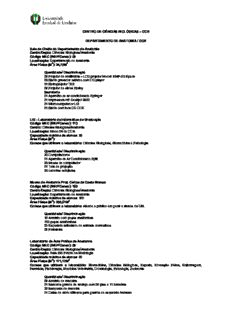
CENTRO DE CIÊNCIAS BIOLÓGICAS – CCB DEPARTAMENTO DE ANATOMIA / CCB Sala da
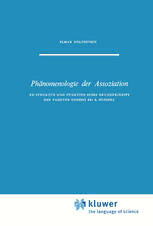
Phänomenologie der Assoziation: Zu Struktur und Funktion eines Grundprinzips der Passiven Genesis Bei E. Husserl
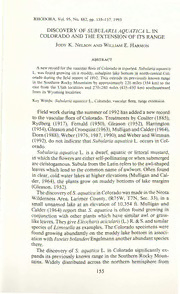
DISCOVERY OF SUBULARIA-AQUATICA L IN COLORADO AND THE EXTENSION OF ITS RANGE

Духовные христиане молокане в Амурской области во второй половине XIX - первой трети ХХ вв

O Rei Mago
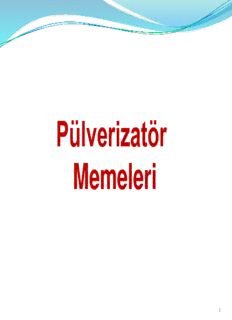
BİTKİ KORUMA MAKİNALARI 6 Kaynak
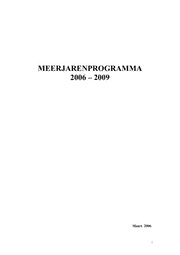
Meerjarenprogramma 2006-2009
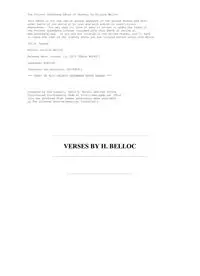
Verses by Hilaire Belloc

Not a problem? girls and school exclusion

Nature’s Crossroads: The Twin Cities and Greater Minnesota
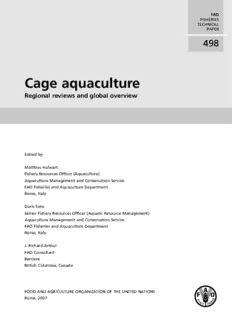
Cage aquaculture - The Ocean Stewards Institute
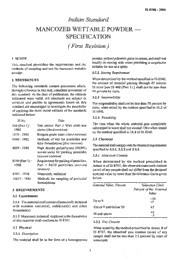
IS 8708: Mancozeb Wettable powder
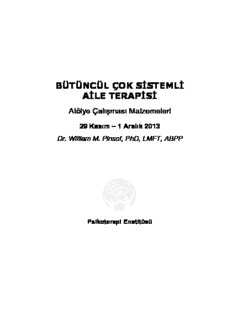
bütüncül çok sistemli aile terapisi

Future Sanctuary


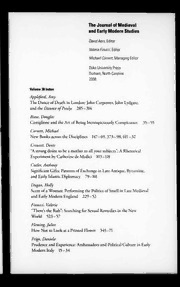
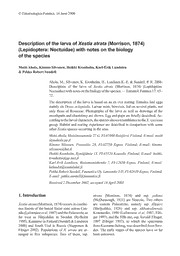
![Socio-economic indicators in integrated coastal zone and community-based fisheries management [electronic resource] : case studies from the Caribbean book image](https://cdn.pdfdrive.to/media/content/thumbnails/29d56f7e-40f1-4bd9-8756-5463ecb03ec7.webp)
